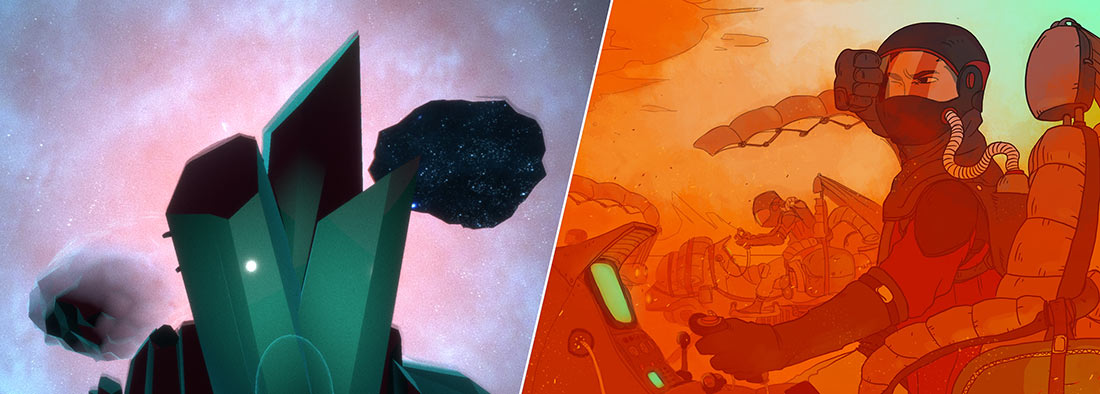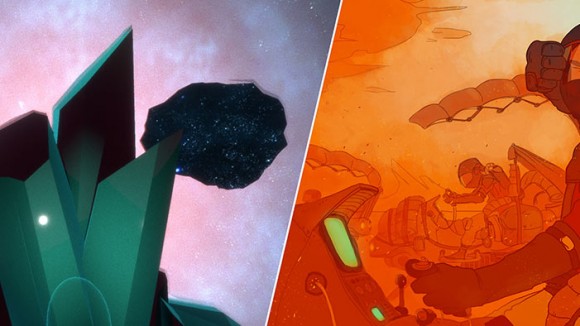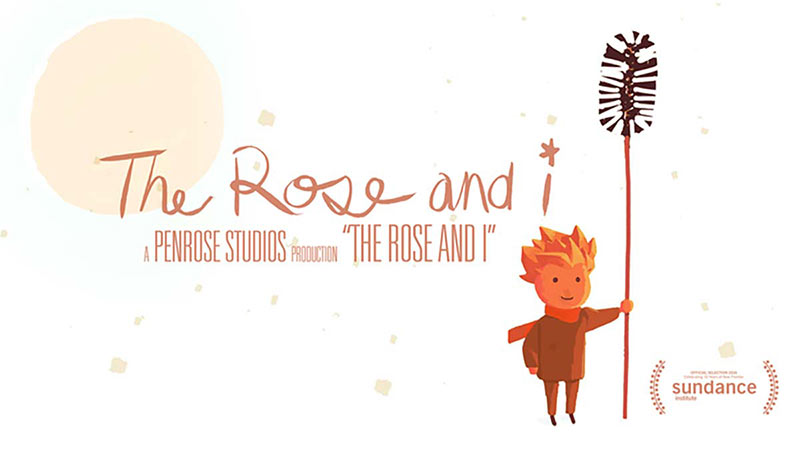

Look Out For These 5 VR Immersions From Sundance’s New Frontier Program
Next year, the deeper reaches of virtual reality animation will be explored at the tenth anniversary of the Sundance Institute’s New Frontier program.
Cartoon Brew previously previewed Sundance’s 2016 animated shorts lineup, noting that last year’s Grand Jury prizewinner, Don Hertzfeldt’s World of Tomorrow, is currently shortlisted for an Oscar. With rapid development underway from Baobab to Oculus — whose formative Rift headset prototype was showcased at New Frontier 2012 — it may only be a matter of time before VR animation immersions start picking up Academy Award nominations themselves.
“For me, New Frontier has always embraced risk and innovation in a way that reflects the heart of Sundance and the ever-evolving nature of film,” explained founder and president Robert Redford in a press release. “It champions films, artists and installations that use new media technology to expand, experiment and explode traditional storytelling.”
“This year’s program provides a sensory experience that powerfully transports audiences to uncommon places and ways of being, offering an opportunity to become viscerally aware of the vital connections between our brains, bodies and biosphere,” added New Frontier’s chief curator, Shari Frilot. “The future of storytelling affords us the ability to observe ourselves and our instincts and become more conscious of the way we make choices and decisions.”
Across multiple venues, including a dedicated 10,000-square-foot exhibition space, audiences will dive into a heady series of 30 VR experiences on mobile headsets and 11 installations. Here’s a preview of five of New Frontier’s notable projects that incorporate animation:
THE ROSE AND I
Artists: Eugene Chung, Jimmy Maidens, Alex Woo
Key Collaborators: Terry Kaleas, Ryan Shore, Nick Sung
Inspired by Antoine de Saint-Exupéry’s timeless novella, The Little Prince, Penrose Studios’ The Rose and I, starring Rachael Bigelow, transports headsetters into an existential sci-fi to ponder loneliness and love. Penrose was founded by former Oculus Story Studio head, Eugene Chung, while the immersive world of The Rose and I was built using Unreal Engine 4. Sundance’s 2016 New Frontier program marks the VR short’s world premiere.

SEQUENCED
Artists: Emilie Joly, Sylvain Joly, Michaël Martin
Key Collaborators: Maria Beltran Reyes, John Howe, Richard Johnson
Apelab claims Sequenced is “the first animated series on 360-degrees for mobile devices and virtual reality helmets,” but it probably won’t be the last. Co-starring Morgan Burch and Peter Coyote, its sci-fi tale of a teenage girl who becomes the guardian of the last city on Earth changes according to user focus. The prize-winning Sequenced is also inspired by Alan Moore’s foundational comic, V For Vendetta, and as well as Hayao Miyazaki’s Nausicaa: Valley of the Wind.
SURGE
Artist: Arjan van Meerten
The Netherlands’ multifaceted Arjan van Meerten created this cool two-minute virtual reality music video all by his lonesome. Built in Unreal, Surge’s evolutionary process begins as basic replication, before exponentially scaling up to a speculative world seemingly without bottom. When VR music videos inevitably catch on, van Meertan’s short may still stand out as a pioneering experiment in complexity.
IRRATIONAL EXUBERANCE
Artist: Ben Vance
Key Collaborators: Sam Bird, Joel Corelitz
Blurring the line between passive entertainment and interactive gamerspace, Los Angeles-based Buffalo Vision’s Irrational Exuberance has aimed its CGI sci-fi bar high, which is to say Stanley Kubrick and Arthur C. Clarke’s 2001: A Space Odyssey. Built for HTC’s Vive head-mounted display and billed by New Frontier as an “interactive art experience,” Vance, Bird and Corelitz’s interstellar puzzle, like 2001, drops its player in infinite space among mysterious phenomena. And while its core experience was actually conceived by Vance to be an hour or two (rather than 2001′s 142 minutes), users can stretch the spatial experience further.
SONAR
Artists: Philipp Maas, Dominik Stockhausen
Posited as an immersive sci-fi horror “shofilm” balancing between traditional cinema and interactive media, the silent, 360-degree Sonar is a CG experience built for wide distribution on Oculus Rift, Sony Morpheus, and Samsung Gear VR. Starring not a human, but rather a drone exploring an asteroid’s caves in search of a distress call’s source, Sonar was created in 2014 by Maas and Stockhausen while students at Filmakademie Baden-Württemberg in Ludwigsburg, Germany. Consider it the Alien to Irrational Exuberance’s 2001. No pressure.
(Top images, left: “Irrational Exuberance,” right: “Sequenced”)

